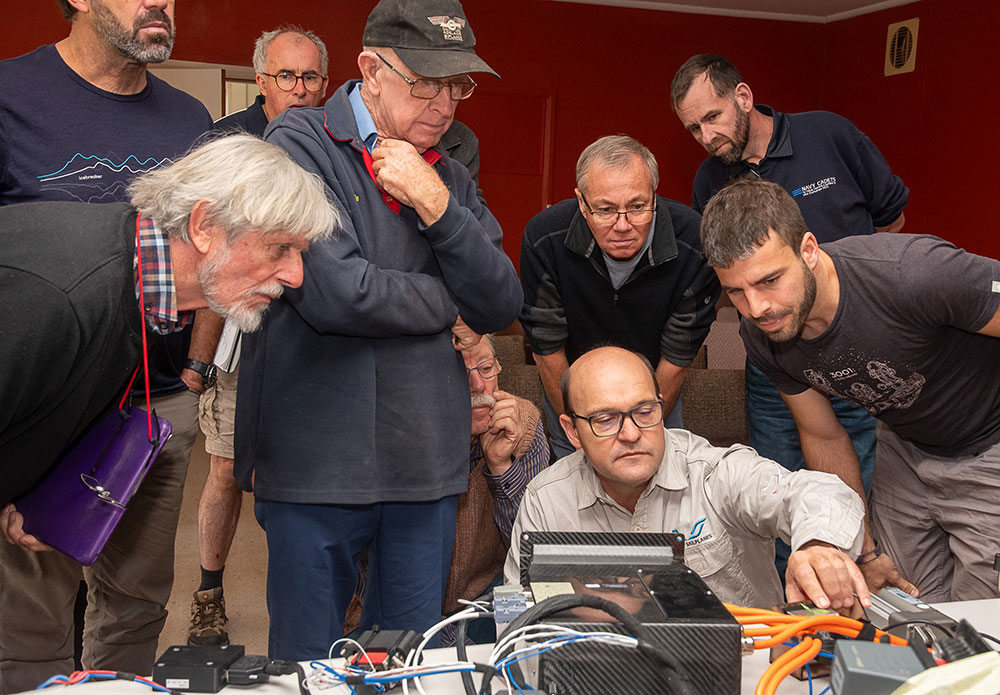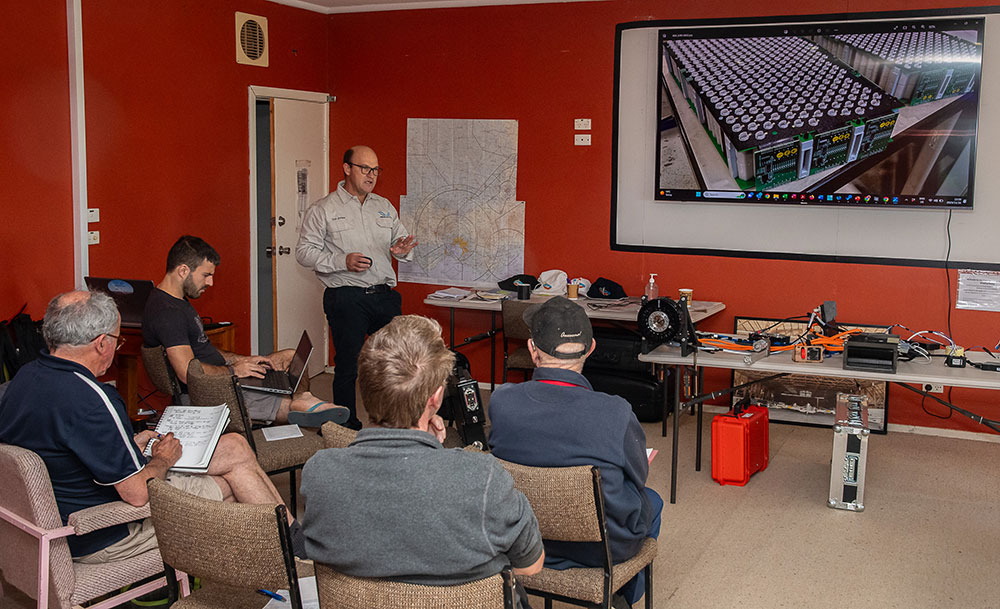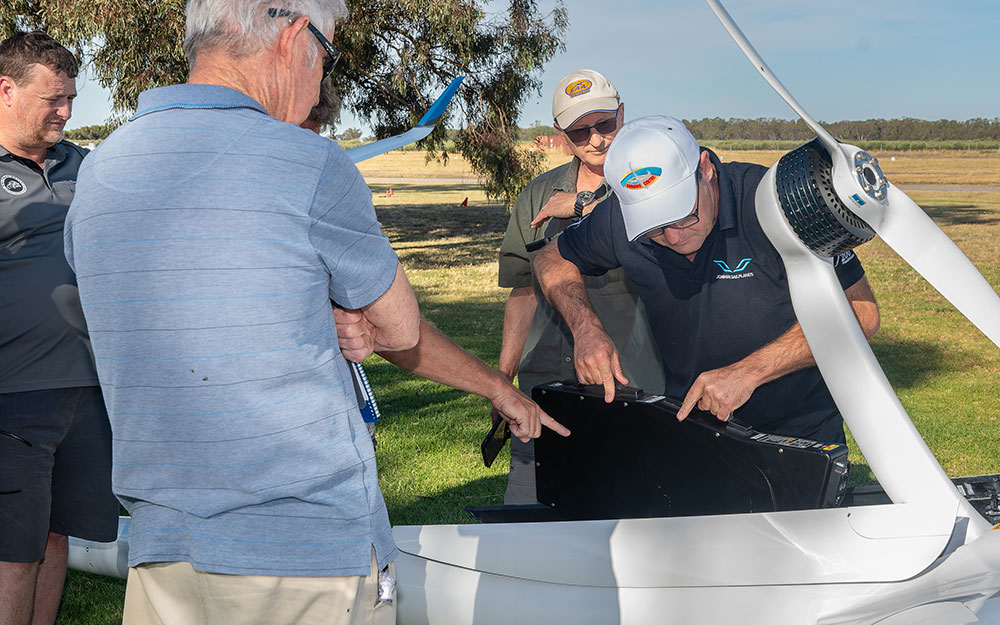
Uys Jonker demonstrating the electric self launch system.
Several new electric self-launching sailplanes are expected to arrive in Australia in the coming months, in addition to the handful already in the country. To meet the future maintenance requirements, Jonker Sailplanes was contracted to provide a training course in electric propulsion systems maintenance.
The practical element of the training was provided at Tocumwal in mid-November. The course was very successful, attended by 37 Gliding Australia members, a CASA representative and a RAAus member. A further six Gliding Australia members attended the webinars only.
One of the unique aspects of this training was that the entire electric propulsion system was assembled on the bench, which enabled easy access to all of the components for learning, rather than peering into the confined corners of a fuselage. The success of the training inspired Jonker Sailplanes to propose to EASA that they carry out the same training in Europe.
The implications for airworthiness training in the future are quite profound. Electric sailplanes are very much ‘powered by wire’ in two senses of the phrase – the power to the electric motor is carried by wires, and a large amount of firmware controls the system.
Previously, airworthiness training has been largely mechanical in nature – airframes, control systems, internal combustion engines and electrical systems were relatively simple, low voltage and low power. With electrically powered sailplanes we have a 400V DC and a 400V AC electrical system, up to 4 individual units with firmware, and a CANbus that links it all together.

Uys Jonker describing the battery assembly.
When the pilot asks for more power in the cockpit, the firmware then needs to agree that it can provide more power without exceeding any limits. Thus, the airworthiness training needs to pivot to cover high voltage electrical systems, CANbus systems and firmware.
At the moment, updating the firmware is not necessarily straightforward on these electric powered sailplanes. Access may be difficult and components may need to be removed, or partially removed, for access. After the Jonker course, the Airworthiness Panel discussed the issue of what level of training was required to update the firmware on electric propulsion systems.
The decision was that members will need Electric Motor Routine Inspection authorisation to update the firmware on electric propulsion systems, and that a record of the firmware updates will be maintaind in the sailplane logbook. A future update of MOSP 3 will be published to cover these new requirements.

Uys Jonker demonstrating battery removal and installation.































